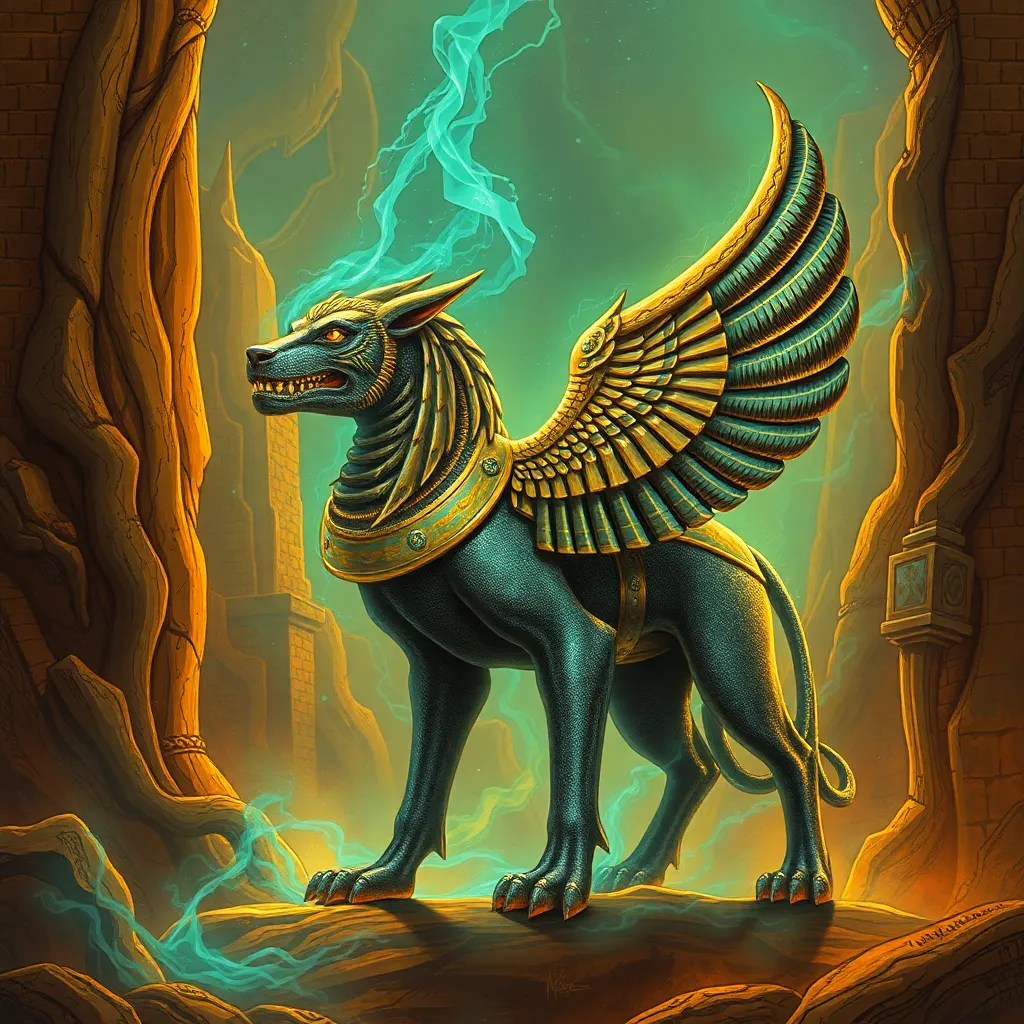The Legacy of Ammit in Egyptian Mythology
I. Introduction
Egyptian mythology is a rich tapestry of gods, goddesses, and mythical creatures that has fascinated scholars and enthusiasts for centuries. It reflects the ancient Egyptians’ beliefs, values, and understanding of the world around them. Among the pantheon of deities and mythological beings, Ammit stands out as a unique and formidable figure.
Known as the Devourer of the Dead, Ammit plays a critical role in the afterlife beliefs of ancient Egyptians. Her fearsome reputation and symbolic significance have left an indelible mark on the cultural landscape of ancient Egypt. This article aims to explore Ammit’s legacy, her impact on Egyptian mythology, and her continued relevance in modern interpretations of ancient beliefs.
II. Origins of Ammit in Egyptian Mythology
Ammit’s origins can be traced back to the early dynastic periods of Egypt, where she emerged as a significant figure within the religious framework of the time. As the concept of the afterlife evolved, so too did the role of Ammit, reflecting the changing beliefs of the Egyptian people.
Ammit is often depicted as a composite creature, embodying the characteristics of three fearsome animals:
- Lion: Symbolizing strength and ferocity.
- Crocodile: Representing danger and the unknown.
- Hippo: Associated with chaos and unpredictability.
This combination of attributes not only highlights her fearsome nature but also underscores her role in the judgment of souls. In the context of ancient Egyptian beliefs, Ammit served as a guardian of moral order in the afterlife.
III. Ammit’s Role in the Judgment of Souls
Central to Ammit’s legacy is her involvement in the Weighing of the Heart ceremony, a pivotal moment in the journey of the deceased. This ceremony was believed to determine the fate of the soul in the afterlife.
During the ceremony, the heart of the deceased was weighed against the feather of Ma’at, the goddess of truth and justice. If the heart was found to be lighter than the feather, the soul would be granted passage to the afterlife. However, if it was heavier, it indicated a life filled with wrongdoing.
Ammit’s position in this judgment process was as a devourer of the unworthy. Should a soul’s heart be deemed heavy, Ammit would consume it, ensuring that the individual could not continue to exist in the afterlife. This act symbolized the ultimate consequence of a life lived in moral failure.
IV. The Symbolism of Ammit
Ammit embodies complex symbolism within the framework of Egyptian mythology. She represents:
- Fear and Consequences: The fear of being devoured by Ammit served as a deterrent against immoral actions during one’s life.
- Justice and Morality: Ammit’s role emphasizes the importance of living a virtuous life, adhering to the principles of Ma’at.
- Balance between Life and Death: By devouring the unworthy, Ammit plays a crucial role in maintaining the balance necessary for the cosmic order.
V. Cultural Depictions of Ammit
Throughout ancient Egyptian history, Ammit has been depicted in various forms of art and literature, showcasing her significance in the culture. Artistic representations often highlighted her fearsome appearance, combining elements of a lion, crocodile, and hippo.
References to Ammit can be found in ancient texts, including the Book of the Dead, which outlines the rituals and beliefs surrounding death and the afterlife. Over different dynasties, Ammit’s image evolved, yet her core symbolism remained intact, reflecting the enduring nature of her role in Egyptian beliefs.
VI. Ammit in Modern Interpretations
In contemporary culture, Ammit continues to capture the imagination of artists, writers, and filmmakers. She appears in various forms of literature, films, and games, often representing the darker aspects of the afterlife and moral consequence.
The comparison between ancient beliefs and modern interpretations reveals a fascinating evolution of Ammit’s character. While ancient Egyptians viewed her primarily as a fearsome judge, modern portrayals often explore her complexity and the themes of justice and morality.
The resurgence of interest in Egyptian mythology has led to a renewed exploration of figures like Ammit, highlighting her relevance in discussions about morality, justice, and the human experience.
VII. The Impact of Ammit on Egyptian Religion
Ammit’s role in ancient Egyptian religion significantly shaped the practices and beliefs surrounding death and the afterlife. She served as a constant reminder of the consequences of one’s actions, influencing the moral teachings of the time.
Ammit’s relationship with other deities, particularly Ma’at, underscores the interconnectedness of the pantheon. While Ma’at represents truth and order, Ammit embodies the consequences of failing to adhere to these principles, creating a dynamic that emphasizes the importance of justice in the afterlife.
The legacy of Ammit extends beyond her immediate role; she has influenced moral teachings, reinforcing the idea that one’s actions in life have significant repercussions in the afterlife.
VIII. Conclusion
Ammit holds a significant place in Egyptian mythology, embodying the fears and moral imperatives of ancient Egyptian society. Through her role in the Weighing of the Heart ceremony and her terrifying reputation, she has left a lasting impression on the understanding of justice, morality, and the afterlife.
The enduring legacy of Ammit is reflected in both ancient and modern contexts, as she continues to provoke thought about the consequences of our actions. Understanding mythological figures like Ammit illuminates the complexities of human beliefs and the ways in which they shape our cultural narratives.




